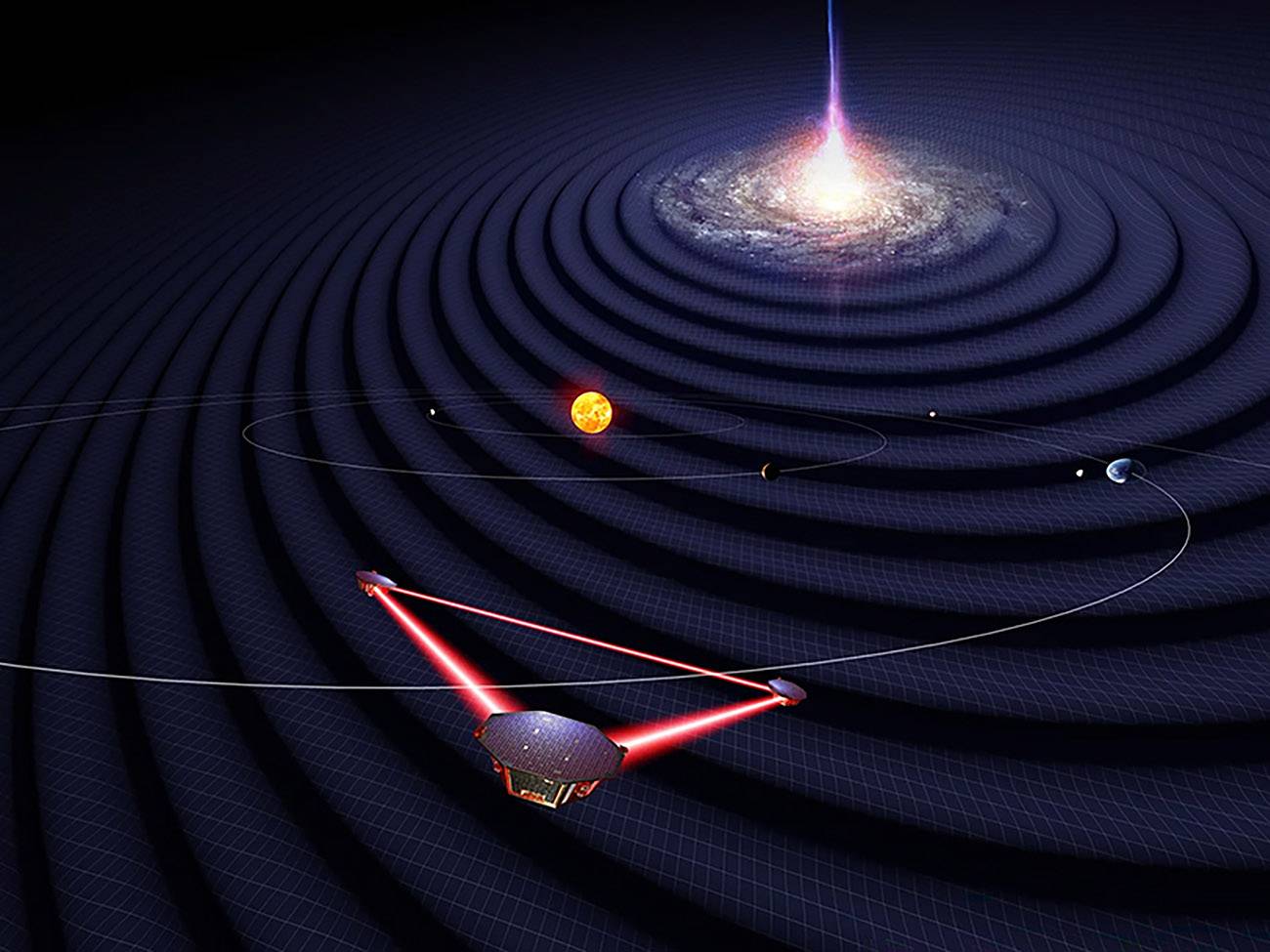The European Space Agency's (ESA) Science Program Committee has today approved the LISA (Laser Interferometer Space Antenna) mission, the first scientific effort to detect and study gravitational waves from space, with the participation of two Spanish space research institutes (ICE-CSIC). and IEEC).
Through this step, formally called “adoption,” ESA recognizes that the mission concept and technology are sufficiently advanced, and gives the green light to build instruments and spacecraft. The work will start in January 2025 once the European industrial contractor is selected.
LISA is not just one spacecraft, but a constellation of three. These follow the Earth's orbit around the Sun, creating a more accurate equilateral triangle in space. Each side of the triangle is 2.5 million kilometers long (six times the distance between the Earth and the Moon), and over this distance the spacecraft will exchange laser beams. The launch of the three spacecraft is planned for 2035 on an Ariane 6 rocket.
Sound for the movie Universe
A century ago, Einstein made a revolutionary prediction that when massive objects accelerate, they shake the fabric of space-time, creating tiny ripples called gravitational waves. Thanks to modern technological advances, these elusive signals can now be detected.
Across the Universe, LISA will detect ripples in spacetime caused by the collision of supermassive black holes at the centers of galaxies. This will allow the team to trace the origin of these objects, their growth to millions of times that of the Sun, and determine the role they play in the evolution of galaxies.
“LISA is an initiative that has never been attempted before. Using laser beams tens of kilometers away, ground-based instruments can detect gravitational waves from supernova explosions or events involving stellar-sized objects such as high-density stars and stellar-mass black holes. To expand the boundaries of gravity studies, we need to go into space,” explains Nora Lutzgendorf, lead scientist of the LISA project.
An echo of the universe's earliest moments
The mission is set to capture the early moments of gravity in our universe, as predicted by current theories, and provide a direct view of the first seconds after the Big Bang.
Also, because gravitational waves carry information about the distance of the objects emitting them, LISA will help verify the results by measuring the change in the expansion of the universe with a different scale than the techniques used by the Euclid spaceflight and other probes. .
In our galaxy, LISA will detect the merging of many compact objects, such as white dwarfs or neutron stars, providing a unique view of the final stages of the evolution of these systems. By determining their positions and distances, LISA will improve our understanding of the structure of the Milky Way.
To detect gravitational waves, LISA will use solid cubes of gold and platinum, called test masses (slightly smaller than a Rubik's cube), that float freely in a special casing at the heart of each spacecraft. Gravitational waves can cause small changes in the distance between masses in different spacecraft and these variations can be monitored using laser interferometry.
The technique requires laser beams to be fired from one spacecraft to another, then superimposed on their signal to determine changes in mass distances to within a few billionths of a millimeter.
The spacecraft must be designed in such a way that nothing but the geometry of spacetime affects the motion of the masses in free fall.
Spanish contribution to LISA
Led by ESA, LISA is made possible by a collaboration between ESA, NASA and the LISA Consortium, an international consortium of scientists.
The scientific contribution in Spain is jointly led by the Institute of Space Sciences (ICE-CSIC), the Institute of Cosmos Sciences of the University of Barcelona (ICCUB) and the Universitat Politècnica de Catalunya – BarcelonaTech (UPC). They are all affiliated members of the Institute of Spatial Studies of Catalonia (IEEC).
The Spanish contribution focuses on the Science Diagnostic Subsystem (SDS), one of the three main flight subsystems. The aim is to measure the environmental perturbations on each satellite in the galaxy to distinguish them from the effects of gravitational waves. SDS will have temperature, magnetic field and radiation sensors on each satellite.
“To detect gravitational waves, LISA will measure the displacement between masses in free fall, down to the picometer scale, roughly the size of atoms, on each of the three satellites in space,” says Miquel Nofrarias, experiment researcher at ICE. -Member of CSIC and IEEC, and LISA consortium.
“SDS sensors should achieve unprecedented levels of precision and stability in space, able to distinguish the effect of small environmental fluctuations generated by a gravitational wave,” he adds.
In addition to the contribution to the LISA instrument, ICE-CSIC will also lead the development of a data distribution center in Spain with the necessary means for its scientific exploitation.
“The main objective is to provide the Spanish scientific community with the tools necessary to realize the scientific potential of Lisa, which will enable revolutionary discoveries to be made that will impact astrophysics, cosmology and fundamental physics,” says researcher Carlos F. Sopurta. ICE-CSIC and IEEC and member of the ESA Scientific Research Group for the LISA mission.
The spacecraft follows in the footsteps of its predecessor, LISA Pathfinder, which demonstrated that it can maintain test masses in free fall with an astonishing degree of accuracy. The Spanish contribution to the LISA pathfinder, launched in 2015, was led by ICE-CSIC and IEEC within the framework of the ICE-CSIC Gravitational Astronomy Research Group.

